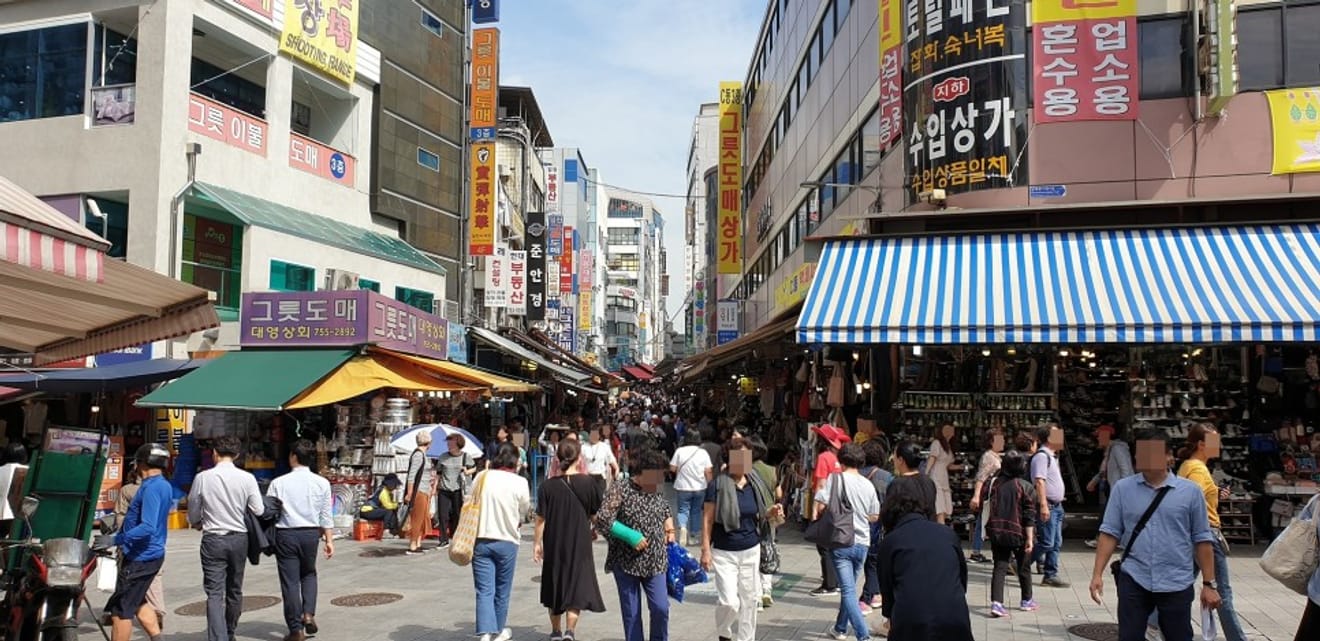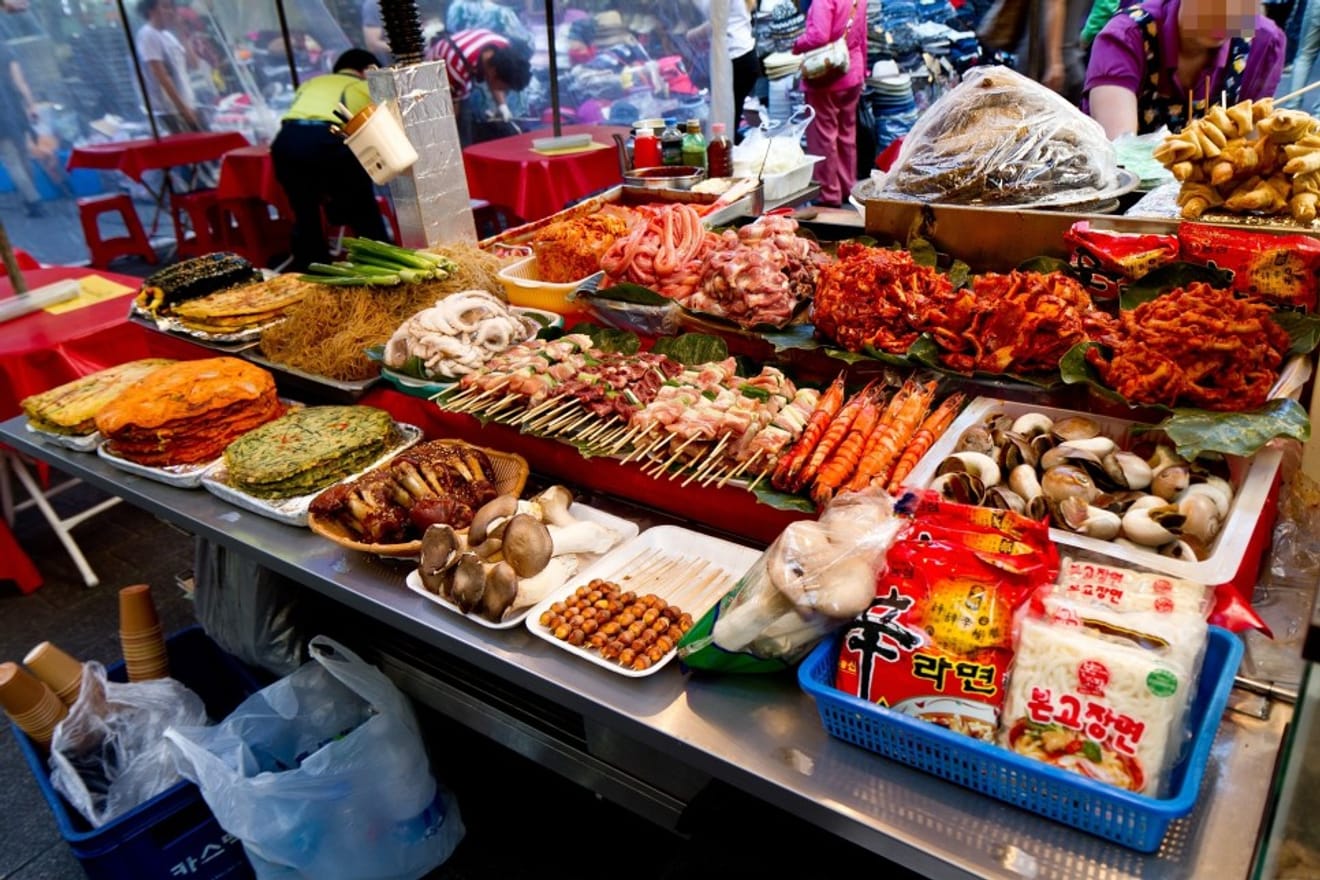Subject
- #Korean Culture
- #Korea Travel
- #Seoul Traditional Market
- #Seoul Travel
- #Namdaemun Market
Created: 2024-03-20
Created: 2024-03-20 14:30
Namdaemun Market is one of the largest and busiest traditional markets in South Korea, a sprawling shopping district in the heart of Seoul that has been operating for over 600 years. It boasts thousands of shops and street vendors selling everything from clothing and accessories to traditional Korean snacks and souvenirs.
The market is particularly renowned for its wide variety of hanbok (Korean traditional clothing) and delicious street food.
Visitors can wander through the narrow alleys and bustling streets, haggle with vendors, and sample a variety of local delicacies.
Furthermore, the market is home to several historical sites, including Namdaemun, a UNESCO World Heritage site built in the 14th century.

Location and Geographic Features
Namdaemun Market is situated in the heart of Seoul, South Korea, and covers over 97,000 square meters with more than 10,000 shops and stalls.
It is located near the iconic Namdaemun (South Gate), a historical landmark and UNESCO World Heritage site. The market is easily accessible by public transportation, with several subway stations and bus stops nearby.
The surrounding area is also a vibrant hub with numerous restaurants, cafes, and street vendors, contributing to its lively atmosphere.
The market is organized into various specialized streets, each specializing in a particular type of product, such as clothing, electronics, jewelry, and traditional Korean goods.
Open from early morning until late at night, the market is a popular destination for both locals and tourists. Its vibrant atmosphere, colorful displays, and energetic vendors create a unique shopping experience, making it a must-visit destination in Seoul.
Furthermore, as a market that has played a significant role in Seoul's economy since its establishment in the early 15th century, it also reflects Korean culture and history.

History
Also known as 'Nammun Market', Namdaemun Market boasts a rich history dating back to the early 15th century, during the Joseon Dynasty.
Established as a hub for trade among merchants from different regions, it quickly grew into one of the largest markets in Korea.
It came to be known as Namdaemun Market due to its location near the southern gate of the old city walls, which was originally called Namdaemun (South Gate).
Throughout history, the market has undergone numerous transformations and changes.
During the early 20th century, under Japanese colonial rule, many Japanese businesses entered the market. The Japanese authorities imposed various regulations on the market and its merchants, significantly impacting Namdaemun Market, which became a focal point of resistance against Japanese colonial rule.
During the Korean War in the 1950s, the market served as a vital source of supplies for the city's residents. After the war, it continued to play a crucial role in the city's reconstruction and economic development. Subsequently, as the Korean economy began to flourish, the market experienced a period of rapid growth and expansion.
Furthermore, during periods of political upheaval in the country, it became the site of many historical events, including protests and demonstrations.
Through centuries of change, including fires, wars, and foreign invasions, the market has endured and thrived, becoming one of the oldest and largest traditional markets in Korea with over 600 years of history. Today, it remains a bustling and vibrant place, where visitors can experience the charm of a traditional Korean market with its colorful stalls, narrow alleys, and diverse goods. It has become a beloved and iconic landmark of Seoul, attracting both domestic and international tourists.

Structure
Namdaemun Market is comprised of a wide array of shops selling traditional Korean goods, such as clothing, jewelry, ceramics, and souvenirs, along with diverse food stalls and vendors.
There are also shops that sell electronic products, toys, and household goods, making it a popular shopping destination for both locals and tourists.
Furthermore, the market offers convenient amenities such as banks, post offices, and currency exchange services.
There are also cultural experience centers where visitors can participate in traditional Korean activities such as a traditional herbal medicine market, traditional tea houses, pottery making, and calligraphy practice.
The market is organized into several specialized streets, each with unique characteristics and attractions.
1. Traditional Korean Food Stalls and Textile Shops
Here, you can savor a variety of Korean street food, including bindae-tteok (mung bean pancake), tteokbokki (spicy rice cakes), and bibimbap (mixed rice with vegetables and meat).
Textile shops also sell a range of Korean textiles, including hanbok and norigae (Korean decorative ornaments).
2. Nammun Market, known for its diverse range of clothing, jewelry, and accessories
You can find a wide variety of trendy and affordable fashion items, including handmade jewelry and traditional Korean accessories.
3. Bangsan Market, renowned for its traditional Korean ceramics and kitchenware
Here, you can explore various types of Korean ceramics, such as celadon, buncheong, and white porcelain. There are also many specialized stores selling traditional Korean kitchenware such as rice cookers, pots, and pans.
4. Jungbu Market, known for its electronics and electronic devices
You can find a wide variety of electronic products and devices here, including smartphones, tablets, laptops, cameras, and other devices and accessories.
5. Seomun Market, known for its traditional Korean hanbok and crafts
In addition to a wide variety of hanbok, you can find traditional Korean crafts such as fans, masks, and lanterns.
Overall, Namdaemun Market offers a unique shopping experience for visitors seeking traditional Korean products and a taste of Korean culture.

Historical Significance
For over 600 years, Namdaemun Market has served as a hub for commerce and trade, symbolizing the economic development and growth of Korea. It has also witnessed significant historical events in Korea, including the Japanese colonial period and the Korean War.
Furthermore, it has played an important role in the development of Korean cuisine and traditional crafts.
Visitors can explore the market's diverse offerings, including traditional hanbok, ceramics, street food, and other regional specialties, experiencing Korea's rich cultural heritage. It is also a popular tourist destination where visitors can immerse themselves in local culture and lifestyle.
Comments0